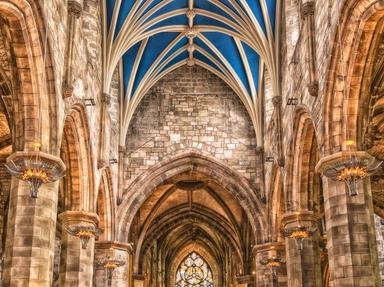Quiz Answer Key and Fun Facts
1. Basilica i Temple Expiatori de la Sagrada Familia is a Roman Catholic church in Barcelona, Spain. What is the name of the architect most closely associated with its design?
2. The Cathedral of the Intercession of the Most Holy Theotokos on the Moat can be seen on Red Square in Moscow. By what name is it more commonly known?
3. Hagia Sophia, often considered to epitomize Byzantine architecture, is now a museum, but it was built as a place of worship for members of which of these groups?
4. Jerusalem is considered the Holy City by Jews, Christians and Muslims. The Church of the Holy Sepulchre is considered by many Christians to be built on the site of Jesus' tomb and/or place of crucifixion. Members of which of these groups (or at least, the majority of them) consider that this is NOT the correct location, considering another site in Jerusalem to be the site of the Crucifixion and Resurrection?
5. One of the earliest extant buildings identified as being an example of Islamic architecture, this shrine is located on Temple Mount in Jerusalem. By what name is it commonly called in English?
6. And for our third house of worship in Jerusalem, we have the Great Synagogue of Jerusalem. It was modelled on the First Temple, which the Hebrew Bible says was constructed on Temple Mount around 1000 BCE under the direction of which King?
7. The Masjid al-Haram, literally the Sacred Mosque, and also called the Great Mosque of Mecca, is the site visited by Islamic pilgrims who must walk around the large black structure shown in the picture as part of which of the Five Pillars of Islam?
8. In which of these cities can you lay eyes on Swaminarayan Akshardham, one of the largest Hindu temples in the world?
9. Originally established as a Hindu temple before transforming into a Buddhist temple, this is generally considered to be the largest religious structure in the world. In what country will you find the complex of Angkor Wat?
10. This picture shows a part of Borobudur, a massive temple complex on the island of Java in Indonesia, about 40 km from Yogyarkarta. The photo shows some of the stupas you will find there. With what religion is Borobudur associated?
Source: Author
looney_tunes
This quiz was reviewed by FunTrivia editor
stedman before going online.
Any errors found in FunTrivia content are routinely corrected through our feedback system.

